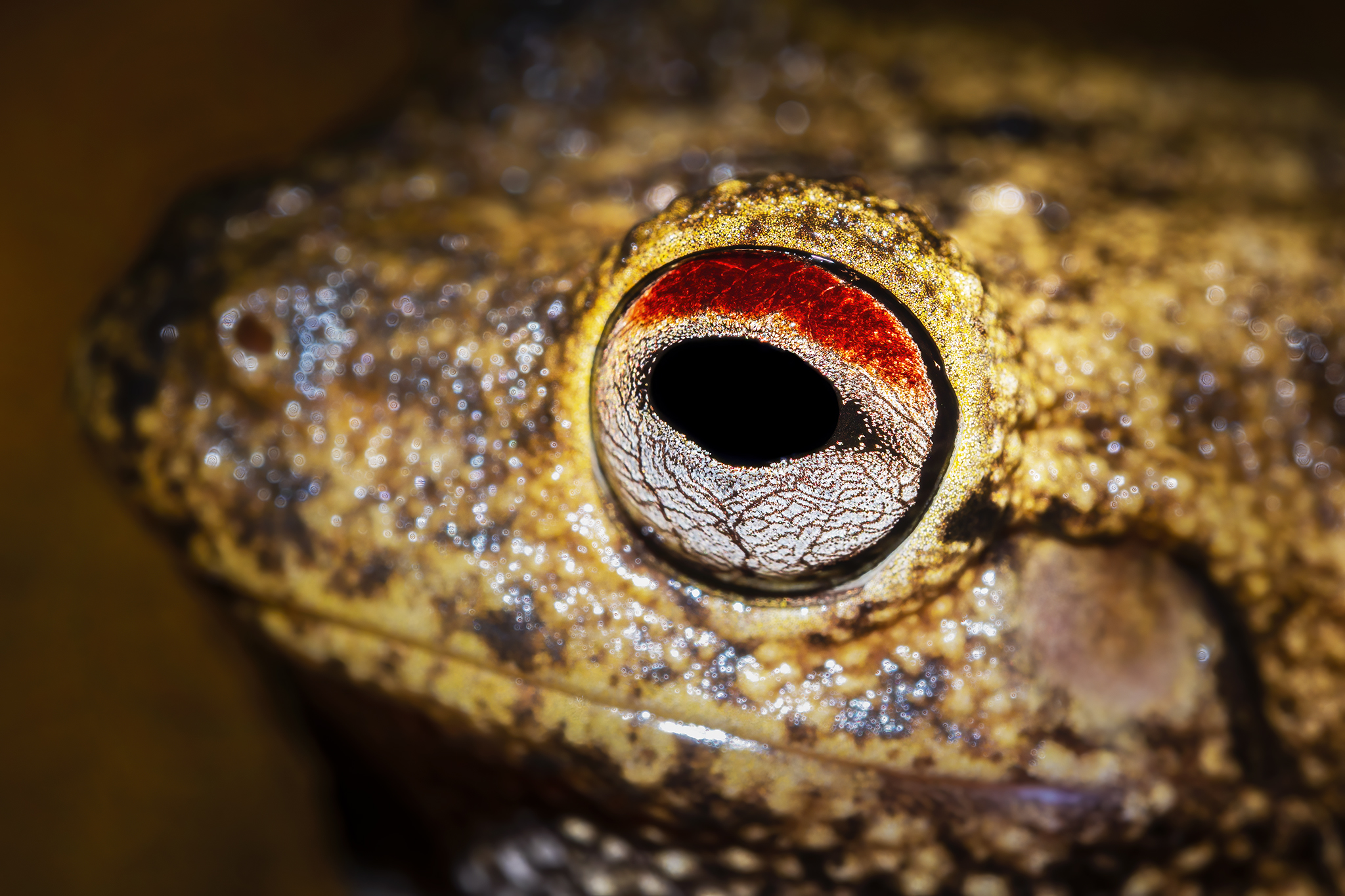Okay, so I have a confession to make. I’ve got a real thing for frog eyeballs… like it probably borders on creepy.
I have been known to approach random frogs in the rainforest and politely ask for a close up photo of their eyeball.
My all time favourite frog eyeball (so far) is this one, belonging to the incredible Roth’s Tree Frog. I’m pretty sure I expressed an audible ‘oh yeah’ when I took this photo.
I apologise unreservedly if I made this frog uncomfortable. Frogs are complex beings that don’t deserve to be objectified on account of their eyeballs.
But seriously – Look. At. That. Eyeball.
I did a fair bit of research and couldn’t seem to work out why these frogs have such a distinctive red patch on their upper iris, so if you happen to be a frog expert, please let me know. But in conducting this research, I did discover a fantastic collection of facts about frog eyeballs.
Enjoy!
1. Frogs are unable to turn their heads, but they make up for this in both eye structure and positioning, allowing for an almost 360 degree view of their surroundings at all times.
2. Frogs use their eyeballs to swallow food. A frog’s tongue is located at the front of its mouth, not the back like us, so it can’t use its tongue for swallowing. Instead, unique facial muscles allow frogs to retract their eyeballs into their head in order to push food down to their stomach.
3. Frogs have two transparent eyelids, as well as a third semi-transparent eyelid called a nictitating membrane. The first two eyelids keep the eye moist, while the nictitating membrane is used to protect the eye while swimming and provide camouflage from predators. (Fun fact – nictitate is a fancy word for blink.)
4. Some species of frogs have demonstrated the ability to repair damage to their eyeballs through cell regeneration. In fact, the embryo of one African frog species was able to fully regenerate its eyeball following an injury. The mechanisms behind this regeneration are being studied in the hopes they will contribute to research in human blindness.
5. Like most nocturnal animals, frogs have eyeballs that contain a layer of tissue called the tapetum lucidum, located directly behind the retina. This layer reflects light back through the retina, improving vision in low light. The tapetum lucidum is also the reason that so many nocturnal animals produce eyeshine.
While my favourite aspect of Roth’s Tree Frog is undoubtedly its eyeballs, it does have one other feature that makes it stand out from other frogs. You can read about it in our post dedicated to Roth’s Tree Frog!
–
Roth’s Tree Frog (Litoria rothii), Darwin Botanical Gardens, Australia


